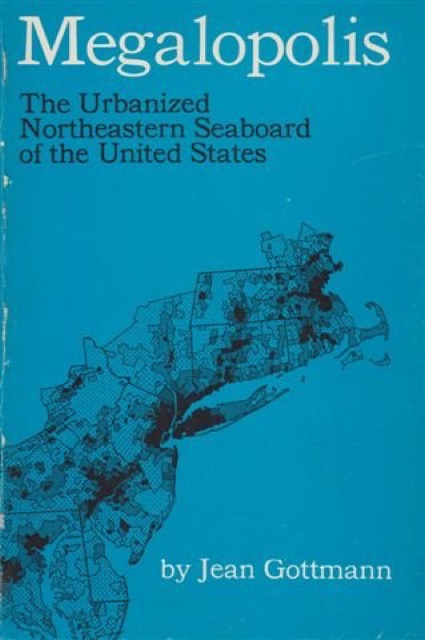When I was about 12 or 13 years old–this would have been about 1964 or 1965–my elementary school principal gathered the upper classes into the auditorium and gave a lecture about megalopolis, the huge expanse of urbanized land stretching from Boston to Washington. I don’t know why he did that–as far as I can recall, he never gave a lecture on any other subject while I was at that school–but he was obviously inspired by French geographer Jean Gottmann’s book, Megalopolis.
At 810 pages in length, the book was as massive as its subject, but its thesis was simple. As stated in his introduction, Gottmann held that “The Northeastern seaboard of the United States is today the site of a remarkable development–an almost continuous stretch of urban and suburban areas from southern New Hampshire to northern Virginia and from the Atlantic shore to the Appalachian foothills.” This unique (at least in the United States) area has unique problems, Gottmann contended, including “Transportation, land use, water supply, cultural activities, use and development of resources.” Moreover, because it was chopped into eleven states or parts of states, the region’s residents weren’t able to solve those problems. As a result, he predicted, poverty, resource shortages, and pollution were likely to get worse.








